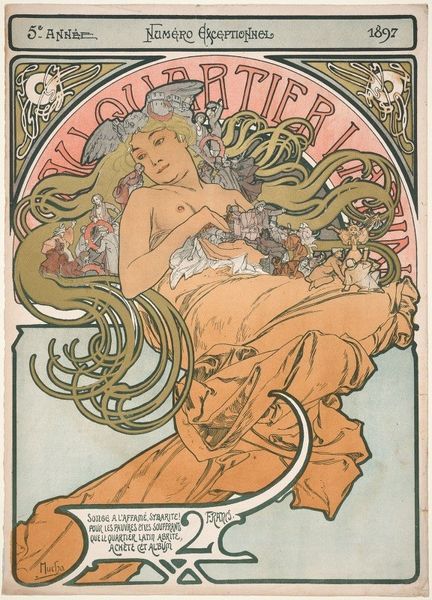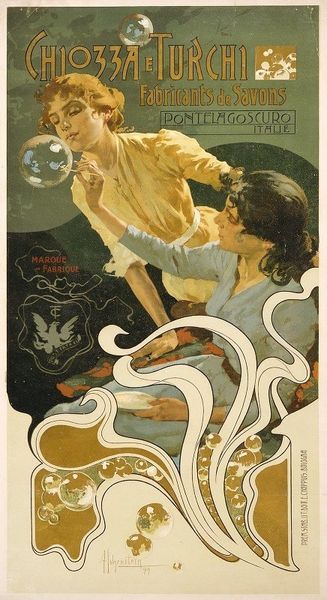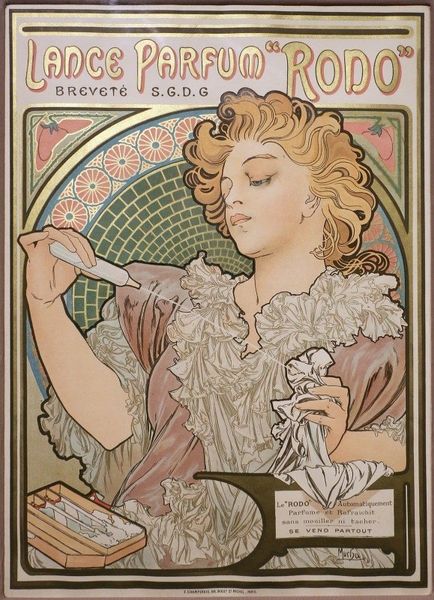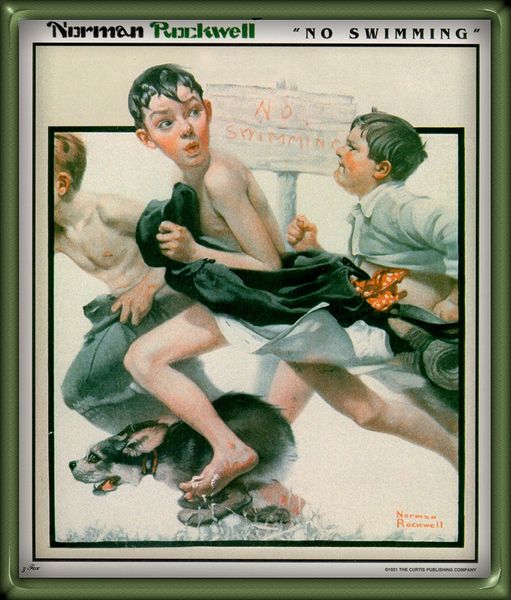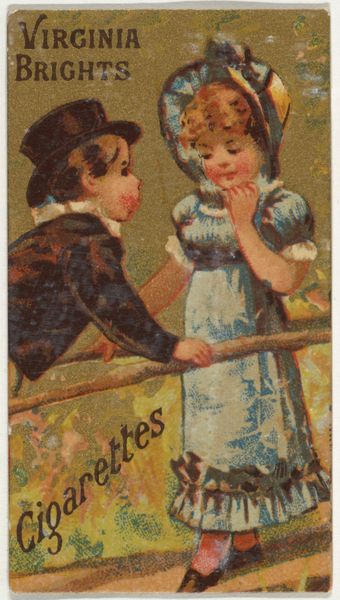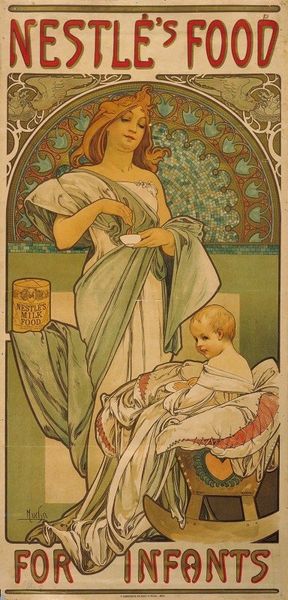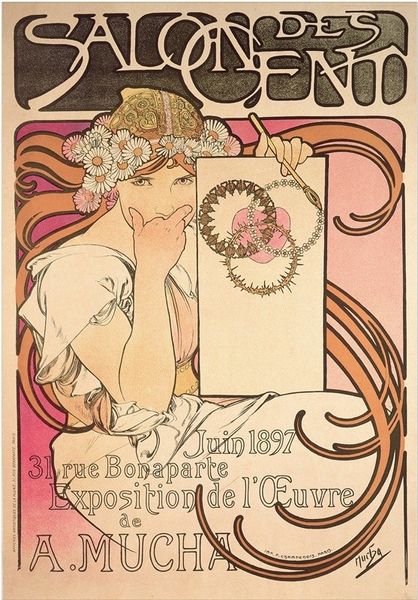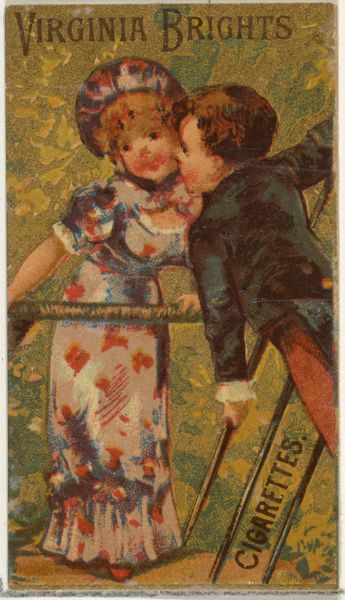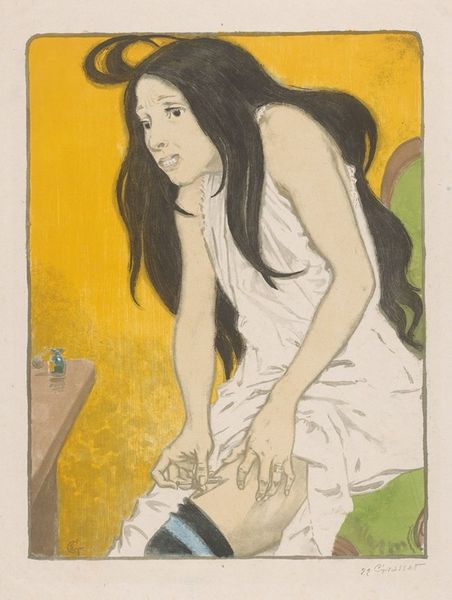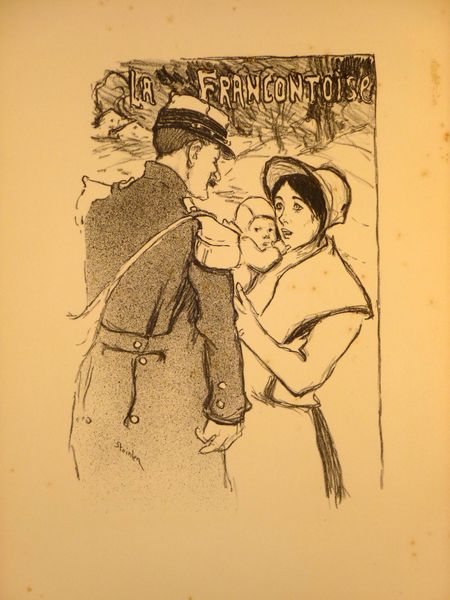
lithograph, print, poster
#
art-nouveau
#
allegory
#
lithograph
# print
#
caricature
#
figuration
#
symbolism
#
cityscape
#
poster
Copyright: Public Domain: Artvee
Curator: Alphonse Mucha's 1897 lithograph, "Société Populaire Des Beaux-Arts," immediately strikes me with its emphasis on accessible art. Editor: The warm, muted tones create an inviting atmosphere. Though seemingly simple at first glance, there's a sense of staged enlightenment between the two figures. Curator: Absolutely. Mucha masterfully utilizes lithography, a printing technique democratizing art production during this period. Think about the shift from singular patronage to mass appeal! This poster serves as an advertisement for art being accessible to all social classes. Editor: I see a clear teacher-student dynamic playing out here. Look at the posture, where the idealized figure almost protects or overlooks the other. The Art Nouveau style uses a sensual visual language to promote education. This lends itself to considering societal roles, who holds knowledge and how that is disseminated within turn-of-the-century Paris. Curator: Precisely. He integrates Art Nouveau's characteristic decorative lines and curves, and this flattens the perspective and highlights the print's inherent material nature as opposed to depth. And the incorporation of Parisian landmarks at the upper corners suggests art rooted in urban life. Editor: The cityscape certainly acts as an invitation, embedding artistic appreciation into daily life, making it visible and less academic. It's also significant who is included here—or excluded, rather. This poster begs the question, does universal access truly extend to all genders, races, and abilities? Curator: I agree, while beautiful, its context underscores broader cultural questions about production and labor in a society rapidly changing with industrial print capabilities and their dissemination. Mucha was designing the packaging and advertisements for industrial scale consumables; this exists in that same sphere of commodity. Editor: That’s so relevant. Thank you for shedding light on that, since it really calls into question how we engage and who truly gets to partake in high art at this moment. Curator: Reflecting on this piece and the role it served shows us just how intricate relationships between art, commerce, and public engagement truly are. Editor: Exactly. "Société Populaire Des Beaux-Arts" makes us confront ongoing dialogues of power, representation, and social change, even through beauty.
Comments
No comments
Be the first to comment and join the conversation on the ultimate creative platform.
